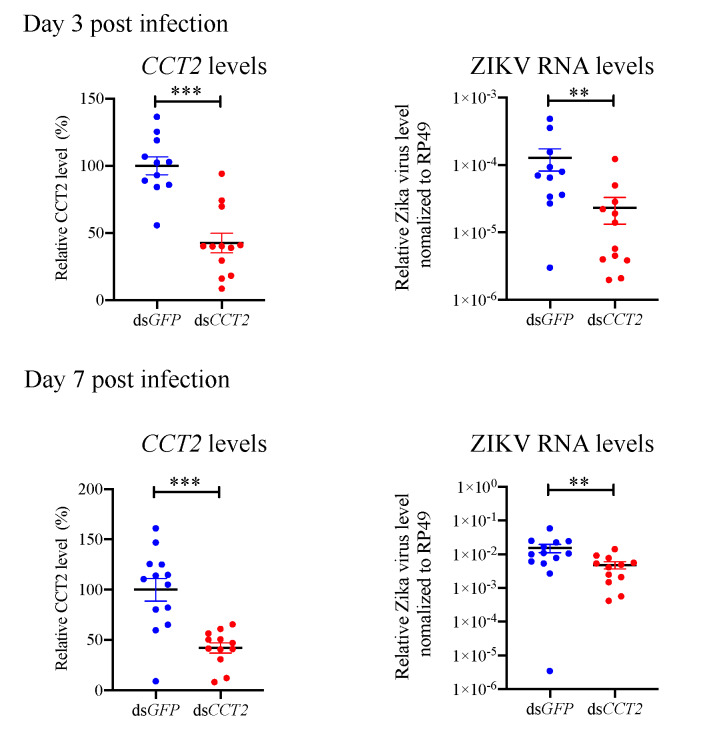Figure 6.
The effect of suppression of CCT2 in Aedes aegypti mosquitoes on Zika virus replication. Aedes aegypti mosquitoes were intrathoracically injected with 500 ng dsRNA targeting green fluorescent protein (GFP) (control) or CCT2 gene. After 3 days post dsRNA injection, Aedes aegypti mosquitoes were injected with 100 PFU of ZIKV. (left panels) At 3 and 7days post ZIKV injection, CCT2 expression levels in the whole Aedes aegypti mosquito were analyzed by qRT-PCR (Day 3: dsGFP-treated mosquitoes: n = 11, dsCCT2-treated mosquitoes: n = 12, Day 7: dsGFP-treated mosquitoes: n = 13, dsCCT2-treated mosquitoes: n = 12). CCT2 RNA levels were normalized to the levels of Rp49. (right panels) At 3 and 7 days post ZIKV injection, viral RNA levels in the whole Aedes aegypti mosquito were analyzed by qRT-PCR (Day 3: dsGFP-treated mosquitoes: n = 11, dsCCT2-treated mosquitoes: n = 12, Day 7: dsGFP-treated mosquitoes: n = 13, dsCCT2-treated mosquitoes: n = 12). Viral RNA levels were normalized to the levels of Rp49. Data are representative of three independent experiments with similar results. Significance is shown with asterisk ** p < 0.01 and *** p < 0.005 by Wilcoxon–Mann–Whitney test. Data are presented as the mean ± SEM.

